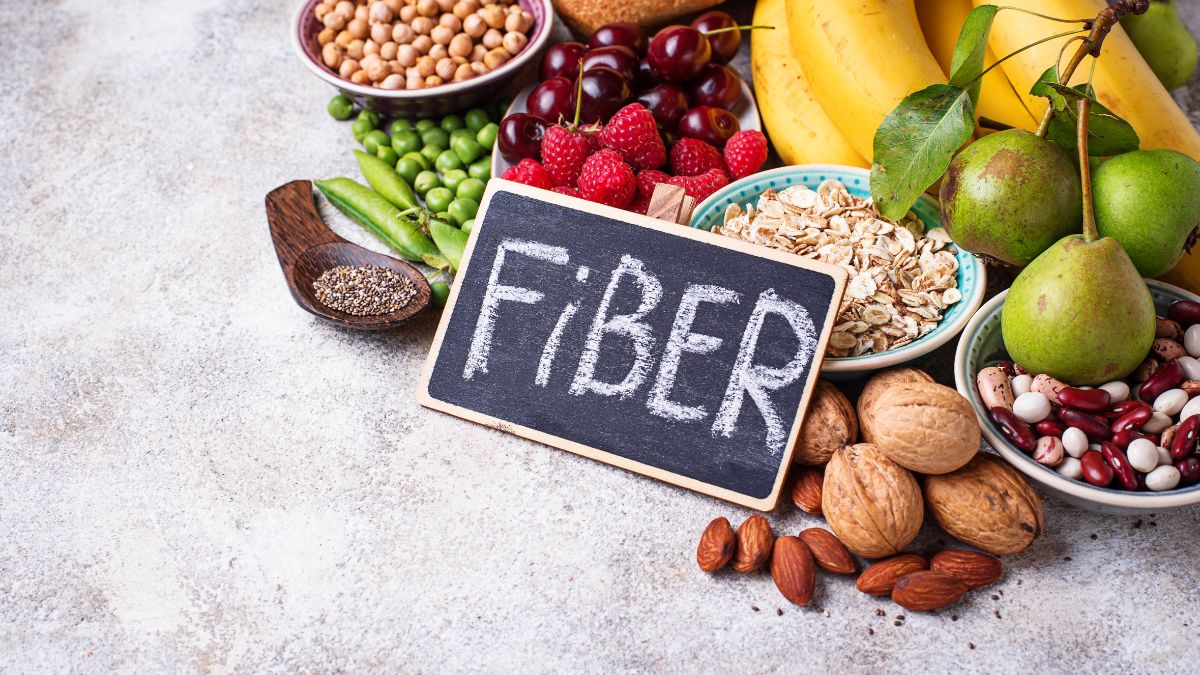- By Bornika Das
- Wed, 20 Aug 2025 08:12 PM (IST)
- Source:JND
Gut health has officially gone viral, and Gen Z is leading the charge. From kombucha to kimchi, they’ve experimented with all things microbiome, but the latest wellness obsession making waves on social media is something surprisingly simple: fibre. The trend, dubbed “fibermaxxing,” is all about maximising daily fibre intake to optimise digestion, balance blood sugar, improve skin, and even boost longevity. Unlike flashy supplements or complicated hacks, this movement leans on a nutrient that’s been quietly sitting in fruits, vegetables, legumes, and whole grains all along.
What sets Gen Z apart is how they’re reframing fibre from a boring “diet food” for weight loss into a badge of biohacking. By blending smoothies packed with chia seeds, swapping fast food for high-fibre bowls, and sharing gut-friendly recipes online, they’re turning fibre into a lifestyle. This shift isn’t just another fleeting wellness trend—it’s backed by science. Research consistently links higher fibre intake to reduced risk of chronic diseases, healthier gut microbiota, and longer lifespans. In conversation with The Daily Jagran, Mr. Nikhil Kapur, Founder & Director of Atmantan Wellness Centre, shares why fibermaxxing might be one of the most accessible, affordable, and evidence-based wellness habits Gen Z has ever embraced.
Mr. Nikhil Kapur states, “Fermentable fibres produce short-chain fatty acids (SCFAs) - acetate, propionate, and butyrate - that our body cannot make on its own (Propionate helps produce glucose in the liver, acetate supports energy production, and butyrate is the preferred energy source for colon-lining cells.)” Fibre also regulates blood sugar, promotes satiety for weight management, and literally helps remove toxins through increased bowel movements.
ALSO READ: What Is The Girl Dinner Trend? Why Is It Making A Comeback In 2025?
These SCFAs provide roughly 10 per cent of your daily caloric needs and serve as primary fuel for colon cells, also supporting immune and metabolic health! They act as prebiotics, feeding beneficial gut microbiota, improving gut barrier integrity, regulating glucose and lipid metabolism, and modulating inflammatory responses! Dals, garlic, onions, asparagus, green bananas, and chicory root are your go-to food items for these.
Mr. Nikhil Kapur mentions “Soluble fibre is known to reduce LDL cholesterol and moderate postprandial blood glucose by slowing gastric emptying. Its key sources include oats, legumes (lentils, chickpeas), apples, citrus fruits, and flaxseeds.”

Why Gen Z Are Turning To Fibermaxxing Trend (Image Credits: Canva)
Insoluble fibre increases stool bulk and promotes intestinal motility, aiding in the prevention of constipation. Include a mix of whole wheat, bran, nuts, seeds, leafy greens, cauliflower, and potatoes to harness these benefits.
Resistant starch improves insulin sensitivity, enhances satiety, and contributes to glycemic control by resisting digestion in the small intestine and fermenting in the colon. Mr. Nikhil Kapur notifies, “Pump up the intake of cooked and cooled potatoes, green bananas, legumes, cooked and cooled rice or pasta, and oats.”
Disadvantages Of Fibermaxxing
Remember, if your system hasn't had the time to adapt, then rushing from zero to hero too quickly can cause concerns of bloating, cramping, and constipation. Mr. Nikhil Kapur states, “People suffering from IBS (Irritable Bowel Syndrome), SIBO (Small Intestinal Bacterial Overgrowth), or IBD (Irritable Bowel Disease) may need strategic, monitored and gradual increases rather than aggressive fibermaxxing.” Make sure to consult a nutritionist or a Doctor as you get on a plan that scales you and helps you fibre up slowly but surely.
The traditional Indian diet can be rich in unrefined grains and vegetable products, making it easier to achieve the required daily fibre intake. Studies also show that Indian diets with wheat and rice as predominant cereals average at 38g fibre per day (fulfilling the daily adult fibre requirement!). Even the abundance of dal, vegetables, whole grains, and traditional cooking methods naturally boosts fibre content.
ALSO READ: What Is Fibremaxxing? Is The New Diet Trend Safe For You?
The paradox is that with increasing urbanisation and processed food consumption, our younger Indians are sadly moving away from the traditional high-fibre diets. They must keep in mind that, regardless of this, traditional Indian diets are naturally fibre-rich and hence superior to Western patterns. While modern lifestyle changes and economic disparities cause many Indians to fall short of optimal intake, in my opinion, a great way to ‘fibre-right’ would be to return to our traditional eating patterns rather than blindly adopting Western ‘fibermaxxing’ trends.
